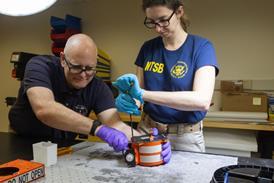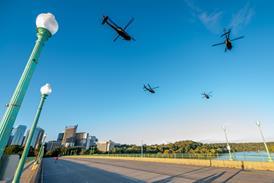
Tim Furniss/LONDON
A Boeing Delta II rocket was launched from Cape Canaveral, Florida, on 11 December, carrying the first of two NASA spacecraft that will be used to conduct the next round of investigations into Mars.
The Mars Climate Orbiter (MCO) is scheduled to culminate in an orbital insertion in September. Its sister spacecraft, the Mars Polar Lander, will be launched on 3 January. Both spacecraft were built by Lockheed Martin.
The MCO carries two payloads, the Pressure Modulator Infrared Radiometer (PMIR) and a Malin Space Systems camera system. A PMIR was first carried aboard the Mars Observer, which exploded just before it went into orbit around Mars in 1993. The radiometer represents the UK's most substantial contribution to Mars exploration yet.
The instrument has been developed by NASA's Jet Propulsion Laboratory and the Atmospheric, Oceanic and Planetary Physics department at the UK's Oxford University, its design being based on remote sensing instruments flown aboard several NASA earth observation missions.
The nine infrared detectors on the PMIR were supplied by GEC Marconi, Southampton, with the assistance of Reading University and Queen Mary College and Westfield College, London.
The PMIR will provide scientists with the most complete overview of Martian weather yet obtained, measuring water content, dust loading and temperature of the atmosphere up to an altitude of 80km from the spacecraft's 400km polar orbit.
"We're looking to find out how the atmosphere works, how it contributes to conditions on the surface and how the climate may have changed in the past," says professor Fred Taylor, the PIMT co-investigator at Oxford University.
Source: Flight International























